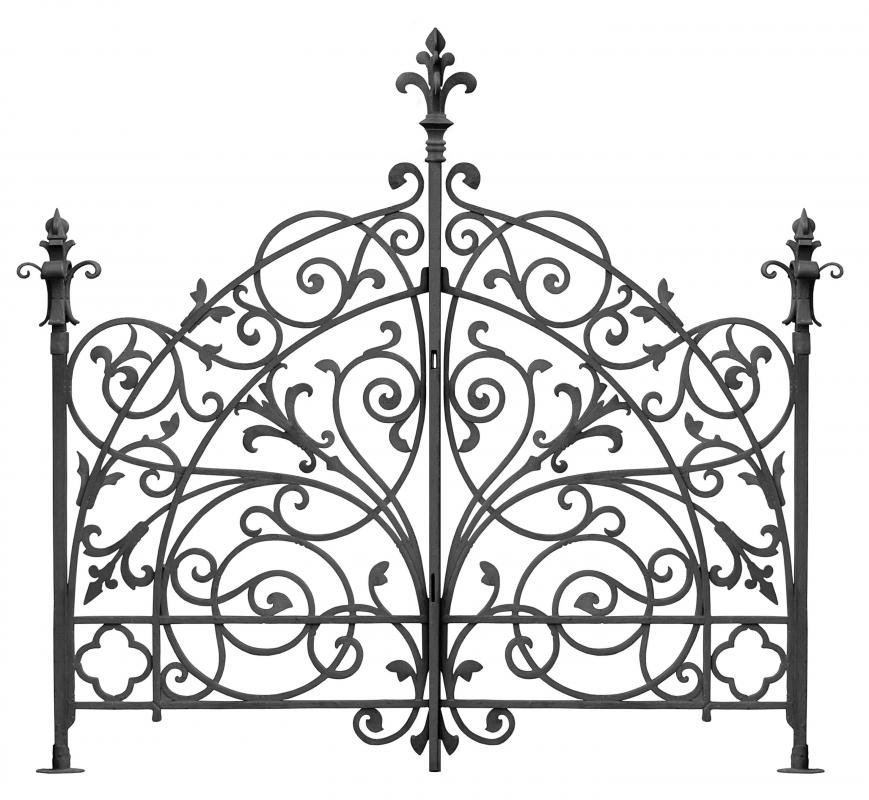At WiseGEEK, we're committed to delivering accurate, trustworthy information. Our expert-authored content is rigorously fact-checked and sourced from credible authorities. Discover how we uphold the highest standards in providing you with reliable knowledge.
What is Wrought Iron Fence?
When choosing a fence to surround their property, homeowners often consider a variety of options, depending on appearance, price, protection offered and ease of maintenance. One of the most iconic and historic fences still in existence is the wrought iron fence. The word “wrought” is an archaic version of the word “worked.” Wrought iron derives this name from how it was created centuries ago, by being repeatedly shaped with a blacksmith's hammer. True wrought iron is a metal created by mixing iron with its processing byproduct, slag, but because this has some disadvantages, most wrought iron fence on the market today is not wrought iron in the true sense, but is, in fact, carbon steel.
Despite the fact that carbon steel that resembles wrought iron is less expensive, easier to mass-manufacture and readily available, true wrought iron does have its advantages. Because it is a metal that requires very high temperatures to make it malleable to work with, wrought iron fence is extremely tolerant of all sorts of adverse conditions and is able to stand up to all manner of weather and physical abuse. Wrought iron structures have survived for many years with little or no maintenance with very little evidence of corrosion, including the Iron Pillar of India, which is purported to be over 1,600 years old, and the Eiffel Tower of France. Wrought iron fence was a common fixture in Victorian-era homes, and as such is often valued as an antique.

Wrought iron fence is commonly sought by homeowners who live in designated historic districts, who may wish to replace or refurbish an existing fence, or add a fence for security or safety reasons. Wrought iron is produced in one of several ways: Puddling, bloomery or the Aston process. Bloomery requires the use of charcoal to heat and shape wrought iron, whereas puddling involves melting and reshaping the raw components. The Aston process, created in 1925 by James Aston, is a more complicated process involving both heating and freezing the components for wrought iron. Commercial manufacture of wrought iron fence ceased in the late 1960s, although smaller specialty companies still exist.

To create wrought iron fence, the iron is molded or worked into ornate and decorative shapes, as well as the utilitarian bars needed to create fencing. The pieces are then fire welded together by a craftsman, and installed by a qualified professional. Wrought iron fence can also be repaired by fire welding newer components to older ones. Fire welding, the use of high temperatures in a forge, is a different process than electrical welding and leaves very little evidence that the pieces were bonded. One way for a prospective buyer of wrought iron fence to determine its authenticity is to check for a visible electric weld point. If there is such a spot, chances are good that the piece is not, in fact, wrought iron, but carbon steel.
AS FEATURED ON:
AS FEATURED ON:














Discuss this Article
Post your comments